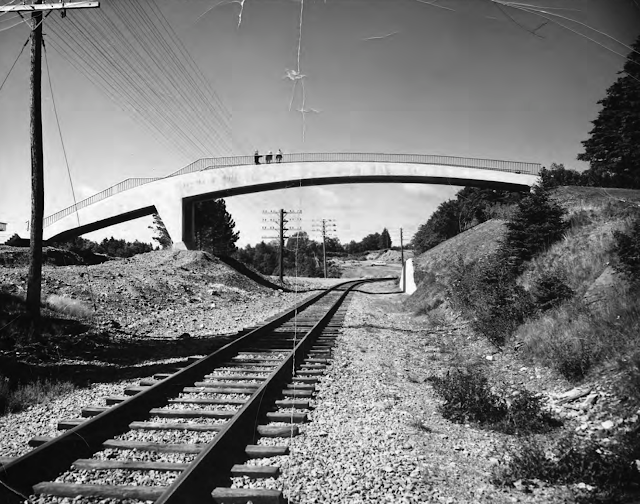| The Green Family Forge. Photo by Dale Jarvis. |
| Blacksmith working at Green Family Forge. Photo by Dale Jarvis. |
| The Green Family Forge. Photo by Dale Jarvis. |
| Blacksmith working at Green Family Forge. Photo by Dale Jarvis. |
Cemetery sleuths Dale Jarvis and Katie Crane introduce you to the BillionGraves app for your mobile phone. BillionGraves is the world's largest GPS-linked cemetery data resource. As you take photos with the BillionGraves app, each gravestone is automatically marked with a GPS location. The data is then made readily available at BillionGraves.com for free for millions of families around the globe for generations to come. Dale and Katie talk about the intro workshops they've been running with communities, and give you some tips on how you can get started using your phone to document and map local cemeteries and grave markers.
A while back, I got an email from Joanne Morrissey, who we've been working with on her North River project. She had just cleared out an old trunk that had been stored in her basement since 1992. Her mother used to buy sheep's wool when they were shorn in the spring, wash it, pick it and mail via Canada Post to Wm. Condon and Sons, PEI, to have blankets made.
She writes, "They would make and return in the mail, or return a blanket in the mail, maybe not from the exact wool, but at the time I thought it was from the exact wool!"
If you have a memory of wool processing in Newfoundland, or the Condon mill in particular, email me at dale@heritagenl.ca.
Last week we visited the most adorable churchyard in Placentia to teach a cemetery conservation workshop with the O'Reilly House Museum and other heritage volunteers.
 |
| St. Luke's Anglican Churchyard. Photo by Katie Crane. |
St. Luke's Anglican Church has an ancient history. The current church was built between 1906 and 1908, but the original church that was on the site was built in 1689. Many of the stones in the churchyard are fieldstones, and there were a number of 17th century Basque stones which were removed for preservation, suggesting the use of the site as a burial ground predates the 1689 church. You can read more about the history of St. Luke's here.
 |
| Memento Mori stones for the Hobson family. Photo by Katie Crane. |
Student workers, museum staff, and other heritage volunteers met inside St. Luke's Anglican Church to listen to Dale Jarvis and Andrea O'Brien discuss cemetery conservation.
Dale talked about the Do's and Don'ts of cemetery conservation. Everyone was curious about how to properly clean and maintain gravestones in historic cemeteries, and how to make sure that information about the gravestones are properly documented using either written marker record forms, or apps like BillionGraves.
Andrea talked about how municipalities can designate historic cemeteries which can help protect them. She talked about the work that the cemetery committee and the Conservation Corps Green Team are doing in the Immaculate Conception cemetery in Cape Broyle.
Afterwards, we had a short break in the rain, so we went outside and I walked people through how to use the BillionGraves app to document the inscriptions on the headstones. The recording is a work in progress, and you can check out the St. Luke's Anglican Cemetery page here.
 |
| Gravestones at St. Luke's Churchyard. Photo by Katie Crane. |
If you want to learn more about the work that's going on in the Immaculate Conception cemetery in Cape Broyle, or why cemetery documentation and public engagement is important, you can check out the most recent HeritageNL newsletter here,
We'd love to visit more communities and help cemetery committees, museum workers, and heritage societies safeguard historic cemeteries. Have questions? Want us to visit your local cemetery and lead a documentation workshop? Get in touch! dale@heritagenl.ca or andrea@heritagenl.ca
July's Living Heritage Economy Case Study features the Labrador Artisan's Co-operative.
| Barked Labrador cossack. Photo by Cindy Colosimo Robbins. |
A newly incorporated organization, the Labrador Artisans Co-operative is using old traditions in new ways to tell the story of Labrador and its history. Barking is a centuries-old tradition used by both Indigenous and settler communities to preserve animal hides, textiles, and fishing gear. The Labrador Artisans Co-operative is mixing this Labrador tradition with innovative materials dyeing techniques to create products that showcase what makes Labrador unique.
| Barked hand bags. Photo by Cindy Colisimo Robbins. |
You can download a pdf version of the case study here.
Eileen lives and works in New Perlican, where she creates unique arts and crafts for her business, NERRL Hand Painted Designs. Eileen is also an active member of the New Perlican Heritage Committee. In today’s episode, Eileen talks about how Newfoundland scenery inspires her art, and some recent heritage projects in New Perlican. Listeners may know the small community for their colourfully painted stages. Picturesque New Perlican is not to be missed if you are taking a drive along the Baccalieu Trail.
 |
| Van Ginkel Footbridge, 1962 |
In this edition of the Heritage Update: Sarah Reid on the Hidden Modernist Architecture in Bowring Park; Rebecca Newhook is looking for possible placements for the MUN Folklore fall 2020 work terms; Dale Jarvis investigates the “St. Johns’ Spruce Beer Brewery” on Signal Hill; a note on possible adaptive reuses for the Greenspond Courthouse by Myles Burry; and Katie Crane and Andrea O'Brien take us for a walk through some historic cemeteries, with some tips on what your communities can do to safeguard our landscapes of memories!